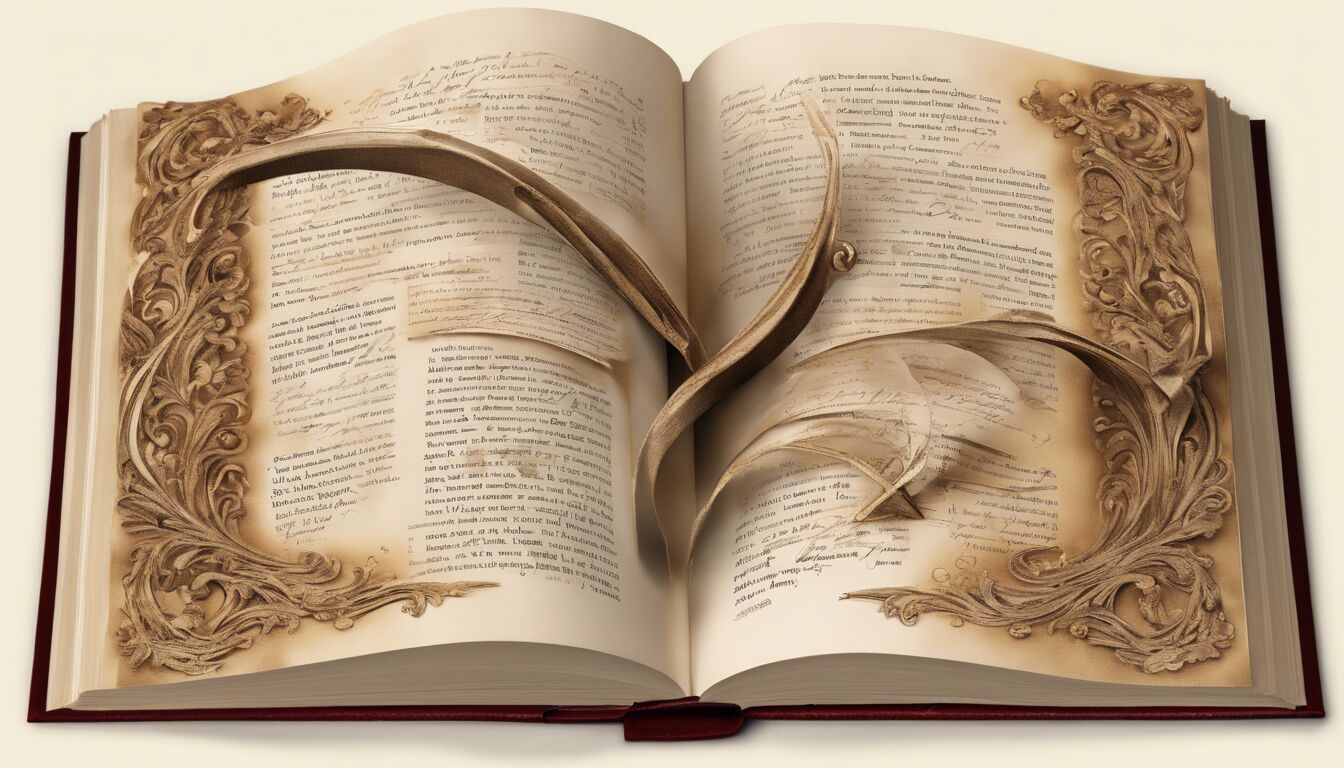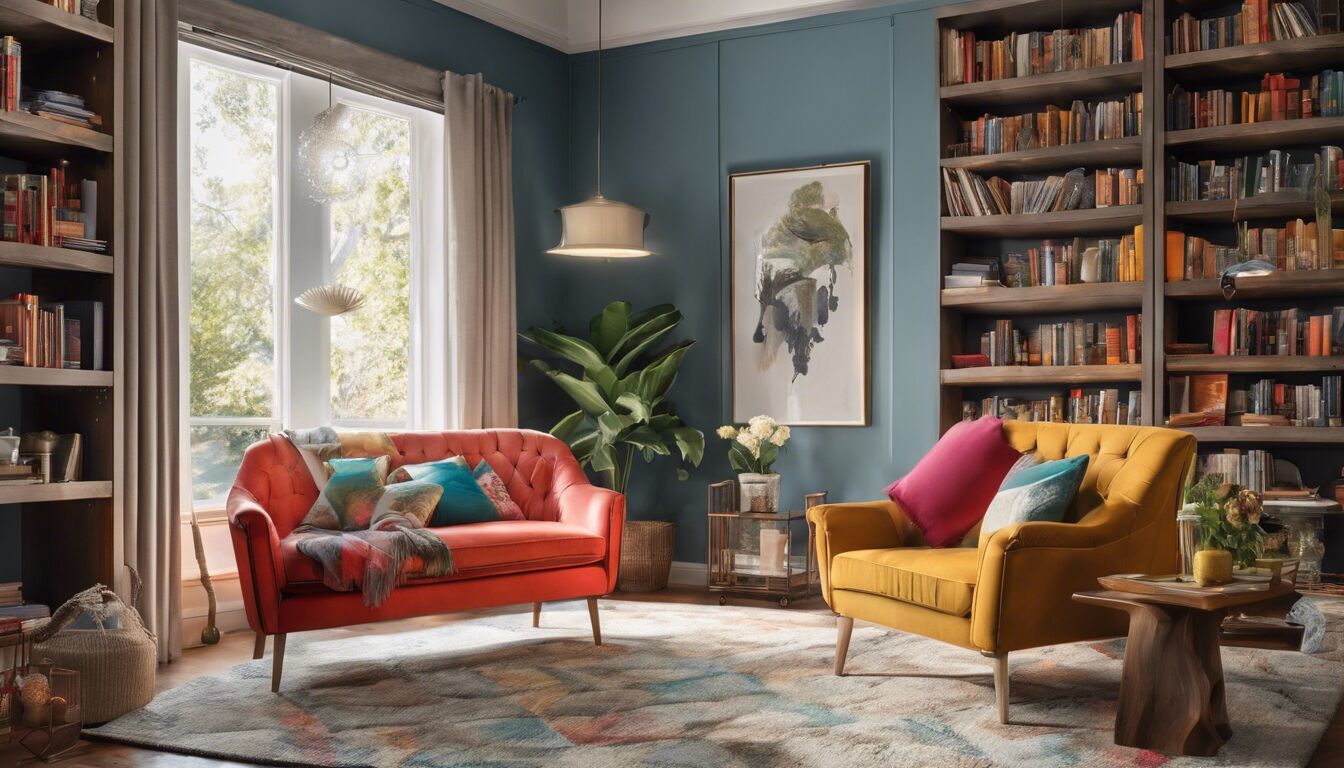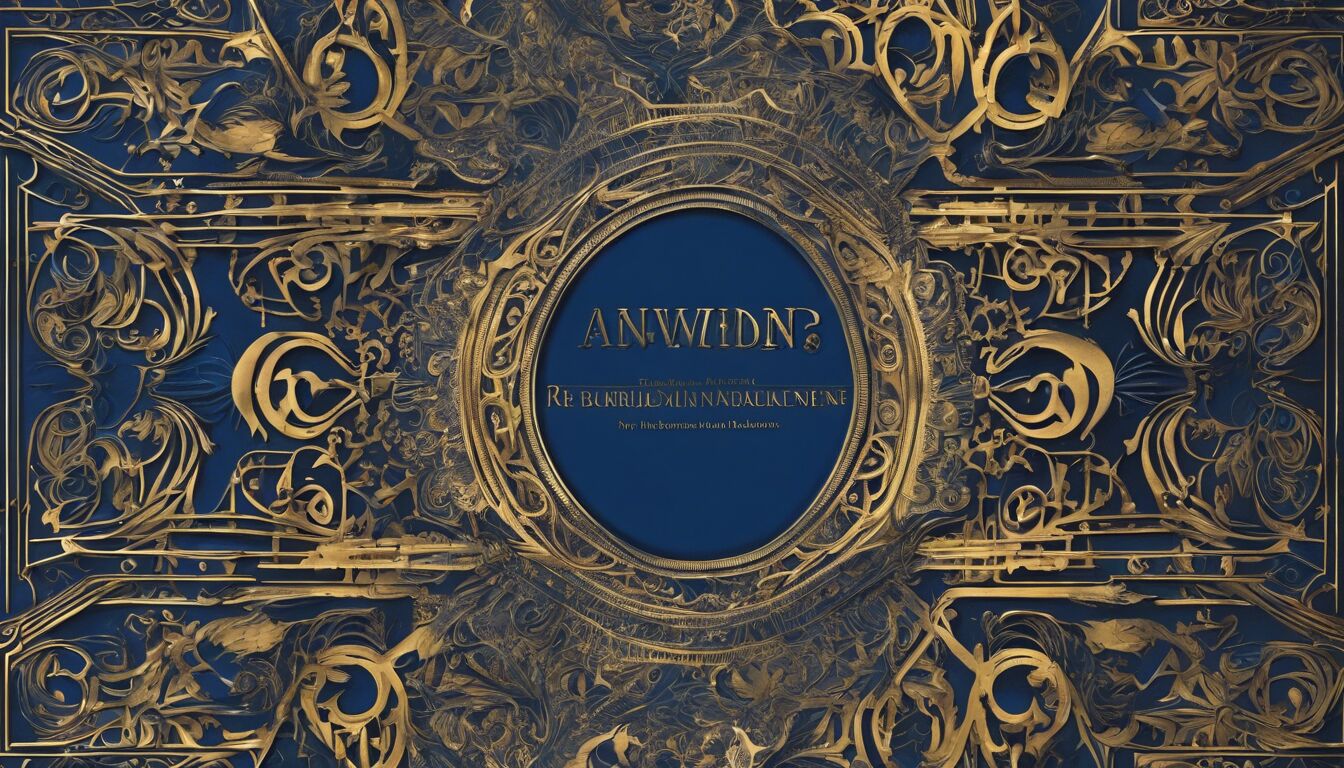blog
Stand Out with Unique Fantasy Book Design
Many aspiring authors and publishers underestimate the importance of book design, thinking the content alone will captivate their audience. However, a well-designed book serves as the initial hook that can make or break the reader’s decision to pick it up. According to industry experts, “a great book cover is crucial in attracting potential readers because it serves as the first point of engagement.” The old adage “don’t judge a book by its cover” holds less weight in the competitive publishing world, where unique covers often give books an essential edge in a crowded marketplace.
Book design encompasses more than just an attractive cover; it involves thoughtful consideration of typography, color schemes, and layout. These elements work in unison to create a cohesive feel that reflects the book’s theme and genre. For instance, a mystery novel may benefit from darker, more enigmatic design choices, while a children’s book would typically employ brighter, more playful elements. All of these design choices contribute to the reader’s overall perception and, ultimately, their reading experience.
The psychological impact of good book design cannot be overstated. When readers encounter visually appealing and well-organized books, they are more likely to perceive them as credible and worthwhile. In a competitive market, an outstanding design can be the determining factor that sets a book apart from its peers. In this context, keywords such as “unique covers” truly reinforce the necessity of investing time and effort into the design process to create a lasting impression and boost overall success.
Leveraging typography for impact
 Leveraging typography elevates the reading experience by marrying the text’s message with its visual presentation. The choice of fonts, spacing, and formatting plays an integral role in ensuring that the reader not only engages with the content but feels connected to it on an aesthetic level. The beauty of typography lies in its ability to subtly influence how the reader perceives and interacts with the text. Carefully chosen fonts can evoke specific emotions and set the tone even before a single word is read.
Leveraging typography elevates the reading experience by marrying the text’s message with its visual presentation. The choice of fonts, spacing, and formatting plays an integral role in ensuring that the reader not only engages with the content but feels connected to it on an aesthetic level. The beauty of typography lies in its ability to subtly influence how the reader perceives and interacts with the text. Carefully chosen fonts can evoke specific emotions and set the tone even before a single word is read.
When designing a book, it’s essential to select a typeface that complements the book’s genre and theme. For a historical novel, a classic serif font such as Garamond can evoke a sense of heritage and elegance, whereas a contemporary thriller might benefit from a clean, sans-serif typeface like Helvetica to create a modern, crisp look. The key is to ensure that the typography aligns with the book’s overall feel, enhancing rather than distracting from the content.
“Typography is two-dimensional architecture, based on experience and imagination, and guided by rules and readability.”
The readability of the text is paramount. Choosing an appropriate font size and line spacing can make a world of difference in how easily readers consume the content. A balance must be struck: the text should neither be so large that it appears juvenile, nor so small that it strains the eyes. Line spacing, or leading, should allow for comfortable reading; too much or too little space can disrupt the reader’s flow and detract from their immersion in the book.
Moreover, typographic hierarchy is vital in guiding the reader through the text. This involves varying font weights, sizes, and styles to distinguish different levels of information. Chapter titles, headings, and subheadings should clearly stand out from the body text, making the book’s structure easily navigable. Text elements such as pull quotes or sidebars can be emphasized with different fonts or styles to break the monotony and highlight key insights or quotes.
Authors and designers should not overlook the unique covers of books. The typography on the cover is the first encounter a potential reader has with the content inside. A compelling and legible title, accented with complementary font choices for the author’s name and any subtitle, can captivate interest and convey the essence of the book at a glance. The synergy between the cover’s imagery and its typography can be powerful, setting the stage for the reader’s journey.
Ultimately, leveraging typography is about creating a harmonious visual narrative that supports and enhances the written word. Thoughtful typography engages the reader, guides them effortlessly through the text, and enriches their overall experience, making the book not just a collection of words, but a unified work of art.
Choosing the right color palette

When selecting a color palette for your book design, it’s crucial to understand the psychological impact colors have on potential readers. Colors can evoke specific emotions and set the tone before a word is even read. For instance, warm tones like red, orange, and yellow often convey excitement, enthusiasm, and energy. These can be particularly effective for adventure novels or self-help books aiming to inspire. Conversely, cool tones such as blue, green, and purple tend to evoke calmness and sophistication, making them well-suited for genres like science fiction or business non-fiction.
Harmony and balance in the color palette are essential. A well-coordinated trio of primary, secondary, and accent colors can create a visually appealing and cohesive design. The primary color should dominate and set the overall mood, while secondary colors support and complement the primary hue. Accent colors are used sparingly to draw attention to specific details, such as the book title or author’s name. This triadic approach ensures that no single element overwhelms the others, maintaining a polished and professional look.
The color palette should also reflect and enhance the genre and theme of the book. For instance, a thriller might incorporate darker tones like black, dark blue, and deep red to generate a sense of mystery and tension. A lighthearted romance novel, on the other hand, might employ softer pastels and warm creams to convey a sense of whimsy and affection. Matching the color scheme with the book’s content creates an intuitive link between the cover and what’s inside, strengthening the overall impact on the reader.
Consider cultural connotations and audience preferences when choosing colors. Colors can have different meanings in various cultures, which can affect the perception of your book. For instance, while white symbolizes purity and innocence in Western cultures, it can represent mourning and sorrow in some Eastern traditions. Being mindful of these differences can help you craft a more universally appealing design or cater to specific cultural audiences.
Unique covers stand out in a crowded marketplace, and a striking color palette is instrumental in achieving this. Bright, bold, and unconventional color combinations can attract attention and make your book memorable. However, it’s important to strike a balance between being eye-catching and maintaining readability. Text and background colors need to contrast enough to ensure that the title and other critical information are easily readable.
Test your color choices on multiple devices and mediums before finalizing the design. Colors can look different on screens compared to printed materials, and since books will be marketed both online and in physical form, ensuring that the palette is effective across all formats is essential. Print test copies to see how colors appear in different lighting conditions and make adjustments as needed.
Incorporating unique color schemes that align with the book’s theme and target audience can enhance the overall appeal and marketability of the book. A carefully chosen color palette not only makes for an attractive cover but also communicates the essence of the book, enticing readers and setting the stage for a compelling reading experience. Remember, the first impression is often made visually, and a strategically designed color palette can convert that initial glance into a lasting interest.
Crafting an eye-catching cover
When it comes to capturing a reader’s attention, the book cover plays an indispensable role. It’s the first visual element a reader encounters, and it can significantly influence their decision to explore further. A well-crafted cover should not only be visually appealing but also resonate with the book’s back content and overall theme.
Understanding the target audience is critical when designing a cover. Consider demographics like age, gender, and interests. For example, a fantasy novel aimed at teenagers might feature vibrant colors and imaginative artwork, while a non-fiction book for professionals might have a more minimalist and sophisticated design. Unique covers need to speak directly to their intended audience to create an immediate connection.
The imagery selected for a cover should convey the essence of the story while being easily understandable at a glance. High-quality illustrations or photographs that evoke the book’s theme can be powerful tools. For instance, a biography might feature a compelling portrait of the subject, while a mystery novel could use dark, enigmatic imagery to hint at suspense.
Typefaces on the cover should be chosen with the same care as the internal typography. The title, subtitle, and author’s name need to be easily readable, even from a distance. Often, the title is the most significant element of the cover, and selecting a distinctive, yet readable font can help it stand out in a crowded market. The font should complement the imagery and color palette, creating a cohesive look rather than competing for attention.
Placement of textual elements is another aspect that designers must judiciously consider. The title often takes center stage, but its position can vary: sometimes it’s situated at the top, other times centered or aligned to the side, depending on what creates the most balanced and eye-catching design. The author’s name usually appears below the title but should not overshadow it.
Incorporating unique, genre-appropriate elements can also boost a cover’s appeal. For science fiction books, incorporating sleek, futuristic graphics can set the stage for the content inside. Historical novels might benefit from antique, textured backgrounds, while romance novels often feature elegant, flowing designs. These detailed touches can suggest the book’s content and genre, providing potential readers with a visual hint about the story within.
Table of elements that can enhance a book cover:
| Element | Function |
| Color Scheme | Creates mood and genre alignment |
| Imagery | Conveys the book’s essence and theme |
| Typography | Enhances readability and aesthetic appeal |
| Layout | Balances textual and visual elements |
| Unique Genre Elements | Adds specific appeal related to book content |
Unorthodox and creative design approaches can also yield unique covers that stand out in the market. Experimenting with materials and printing techniques, such as embossing, foil stamping, or spot UV, can add tactile and visual interest that attracts attention. Transparent dust jackets, cut-out designs, and wrap-around illustrations are just a few ways to make a book cover distinctive.
However, while creativity is encouraged, it must be balanced with functionality. A cover that is too cluttered or fails to clearly present the title and author may do more harm than good. Prioritizing simplicity where necessary can keep the essential information front and center.
Ultimately, the aim is to create a cover that not only grabs attention but also maintains it. The best book covers offer a glimpse into the soul of the book, inviting readers to explore the pages within. Through thoughtful design choices that blend visuals, text, and strategic placement, an eye-catching cover can pave the way for literary success.
Enhancing reader experience with layout
 In an era where digital distractions abound, ensuring an enjoyable and immersive reader experience is paramount. While the content remains the backbone of any book, the layout often serves as the glue that holds everything together, guiding readers seamlessly through the narrative. Imagine diving into a novel only to be confronted with cramped text, inconsistent margins, or poorly placed images that jar the flow. Such design missteps can take the reader out of the story, disrupting their engagement.
In an era where digital distractions abound, ensuring an enjoyable and immersive reader experience is paramount. While the content remains the backbone of any book, the layout often serves as the glue that holds everything together, guiding readers seamlessly through the narrative. Imagine diving into a novel only to be confronted with cramped text, inconsistent margins, or poorly placed images that jar the flow. Such design missteps can take the reader out of the story, disrupting their engagement.
One of the foundational aspects of an effective book layout is consistency. Uniformity in margins, line spacing, and paragraph indentations can make for a smooth reading experience. It is akin to the rhythm in music—when consistent, it creates harmony; when erratic, it produces discord. For instance, maintaining regular chapter headings and subheadings in terms of size and placement ensures that readers can intuitively navigate the text.
Furthermore, the judicious use of white spaces cannot be overstated. White space isn’t simply ’empty’ space; rather, it breathes life into the text, giving readers a visual break which can be especially critical in longer works. It aids in enhancing readability and drawing attention to key elements without overwhelming the reader. Unique covers may capture initial interest, but a well-thought-out internal layout keeps that interest alive by making the reading experience pleasant and engaging.
Another crucial aspect of layout design is the strategic placement of visual elements. Images, illustrations, and diagrams should complement the text rather than compete with it. When used effectively, visuals can elucidate complex points, add depth to narratives, and even reflect the book’s theme and tone. For example, graphs and charts in a non-fiction business book should be positioned adjacent to the relevant text for easy reference, allowing the reader to seamlessly move between the narrative and the illustrative elements.
Balancing text and visual elements also means considering the flow and pacing of the content. Lengthy blocks of text can be daunting, especially in non-fiction where the density of information can be high. Breaking these up with subheadings, quotes, or visual interruptions can maintain the reader’s interest and facilitate better understanding and retention of information. For fiction, strategically placed chapter breaks can enhance suspense and encourage continued reading.
Another layer of enhancing reader experience with layout lies in the technological realm. In the age of eBooks, adapting layouts to be responsive to various screen sizes and formats is crucial. A layout that looks stunning in print might not translate well to a digital format, where readability and navigation are paramount. Ensuring that text reflows correctly, images resize appropriately, and interactive elements like hyperlinks function seamlessly can significantly impact the reader’s experience.
Consider also the accessibility of your book. Design choices should accommodate readers with varying needs. This includes selecting fonts that are dyslexia-friendly, ensuring sufficient contrast between text and background for low-vision readers, and structuring the layout to be navigable by screen readers. By broadening the accessibility of your book, you not only comply with ethical standards but also expand your readership.
Finally, the choice of paper and printing techniques can influence the reader’s tactile experience. The texture, finish, and weight of the paper can evoke different feelings and complement the content. For instance, a glossy finish might be suitable for a photo-heavy art book, whereas a matte, heavyweight paper might add gravitas to an academic text. Unique covers set expectations, and maintaining quality consistency throughout the physical book supports those initial impressions.
Enhancing reader experience through thoughtful layout design involves balancing aesthetics with functionality. By focusing on consistency, using white space effectively, integrating visuals in a complementary manner, and ensuring accessibility across formats, you can elevate your book from a mere collection of words to an engaging and immersive experience. Spark curiosity and entice readers to linger on every page, appreciating not just the narrative but the artful design that supports it.
Integrating unique visual elements

Integrating unique visual elements into your book design can significantly elevate the reader’s experience, making your book not only a collection of words but a unified work of art. Visual elements such as illustrations, photographs, patterns, and even infographics can serve multiple purposes: they can enhance the reader’s understanding, add depth to the narrative, and provide aesthetically pleasing breaks from the text. When executed thoughtfully, these elements work in harmony with the other design components, creating a captivating and immersive reading journey.
For fiction books, integrating illustrations or decorative elements can set the tone and mood from the very first page. Illustrations can be particularly effective in genres like fantasy, children’s literature, or historical fiction. They can bring characters to life, visualize fantastical worlds, or provide historical context, respectively. For example, a fantasy novel cover might include detailed maps of an imaginary world, chapter headings adorned with intricate designs, or even full-page illustrations of pivotal scenes. These visual elements can transport readers into the story, making the imaginary real and tangible.
Non-fiction books also benefit from the strategic use of visual elements. Infographics can simplify complex information and make it more accessible, while photographs and charts can add authenticity and clarity to the text. In a memoir, personal photos can create a deep connection with the reader, allowing them to see the world through the author’s eyes. A business book could use graphs and charts to elucidate trends and data points, breaking up dense text and making the information more digestible. Unique covers with complementary visual elements inside ensure that the book remains engaging from start to finish.
Patterns and textures can subtly enhance the book’s design by adding layers of visual interest without overwhelming the content. Background patterns can add richness to pages or sections, while chapter dividers with unique textures can provide visual cues for transitions within the book. These thoughtful touches help maintain the reader’s engagement, providing a sensory experience that retains their interest.
In the digital age, interactive visual elements are also becoming increasingly popular. Enhanced eBooks can include animations, videos, and interactive infographics that provide a deeper level of engagement. An eBook for a cooking guide might feature step-by-step video tutorials, while a travel book could include interactive maps and virtual tours. These elements not only modernize the reading experience but also cater to different learning styles, making the content more accessible and enjoyable for a broader audience.
However, integrating visual elements is not just about adding flair; it’s about enhancing the overall narrative and reader experience. The visual content should be cohesive with the book’s theme and tone. Illustrations and photographs must align with the narrative’s style and should be placed strategically to complement the text. Randomly inserted images or poorly designed graphics can confuse readers and detract from the book’s quality. Hence, authors and designers must work collaboratively to ensure that every visual element serves a purpose, reinforcing the message and enriching the reader’s journey.
The quality of the visual elements is also paramount. Poor-quality images or amateurish illustrations can make the entire book look unprofessional, no matter how engaging the content may be. Investing in high-quality, professionally designed visuals can significantly enhance the book’s appeal and reputation. This investment pays off by setting your book apart in a crowded market where unique covers and substantive content both play critical roles in capturing and retaining reader interest.
In sum, integrating unique visual elements thoughtfully and strategically can transform your book into a more compelling and immersive experience. By enhancing the narrative, providing clarity, and adding visual interest, these elements do more than just decorate the pages; they deepen the reader’s engagement and help to communicate the book’s essence more effectively. As you design your next book, consider how visual elements can work in concert with the text to create a memorable and impactful reader experience.

